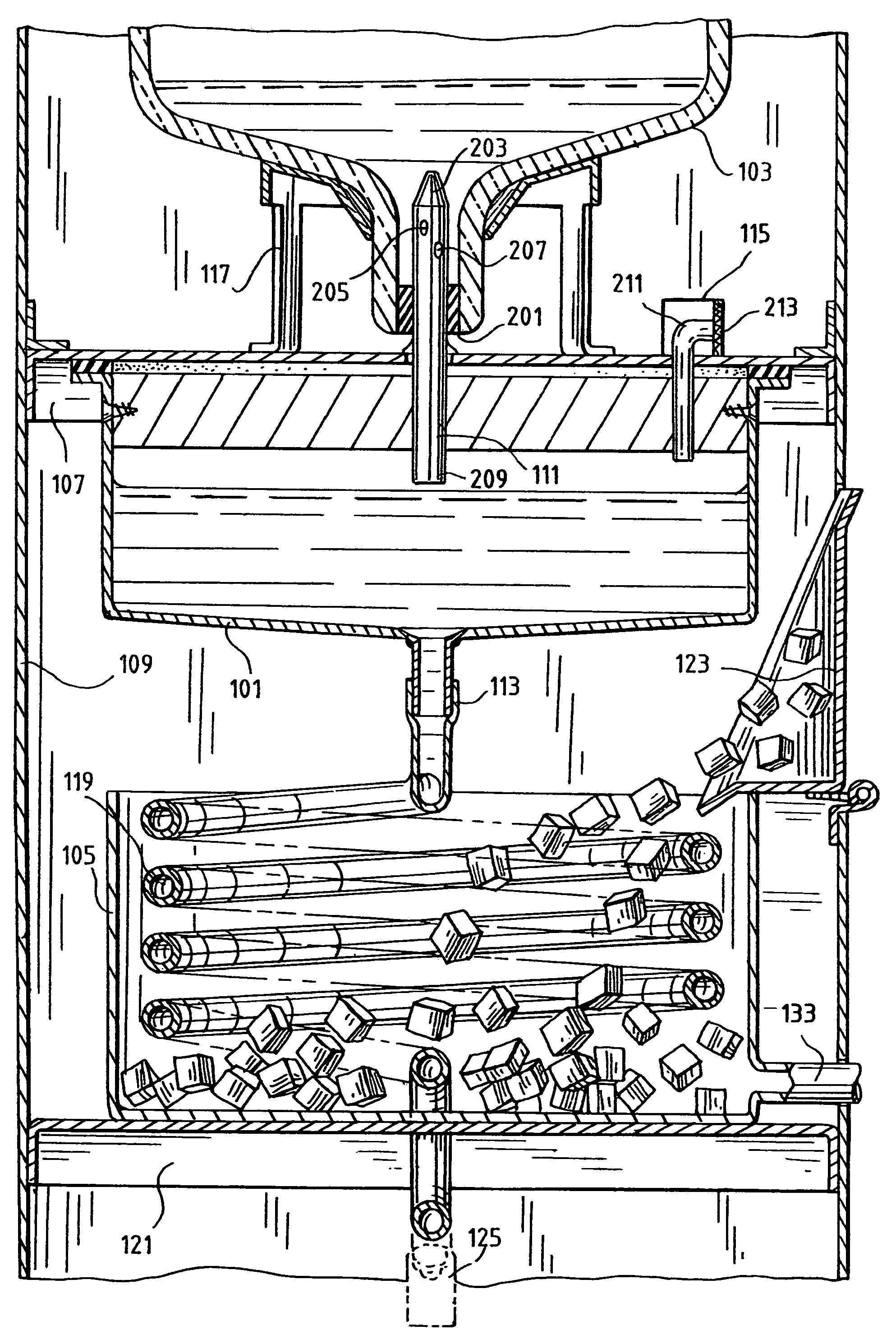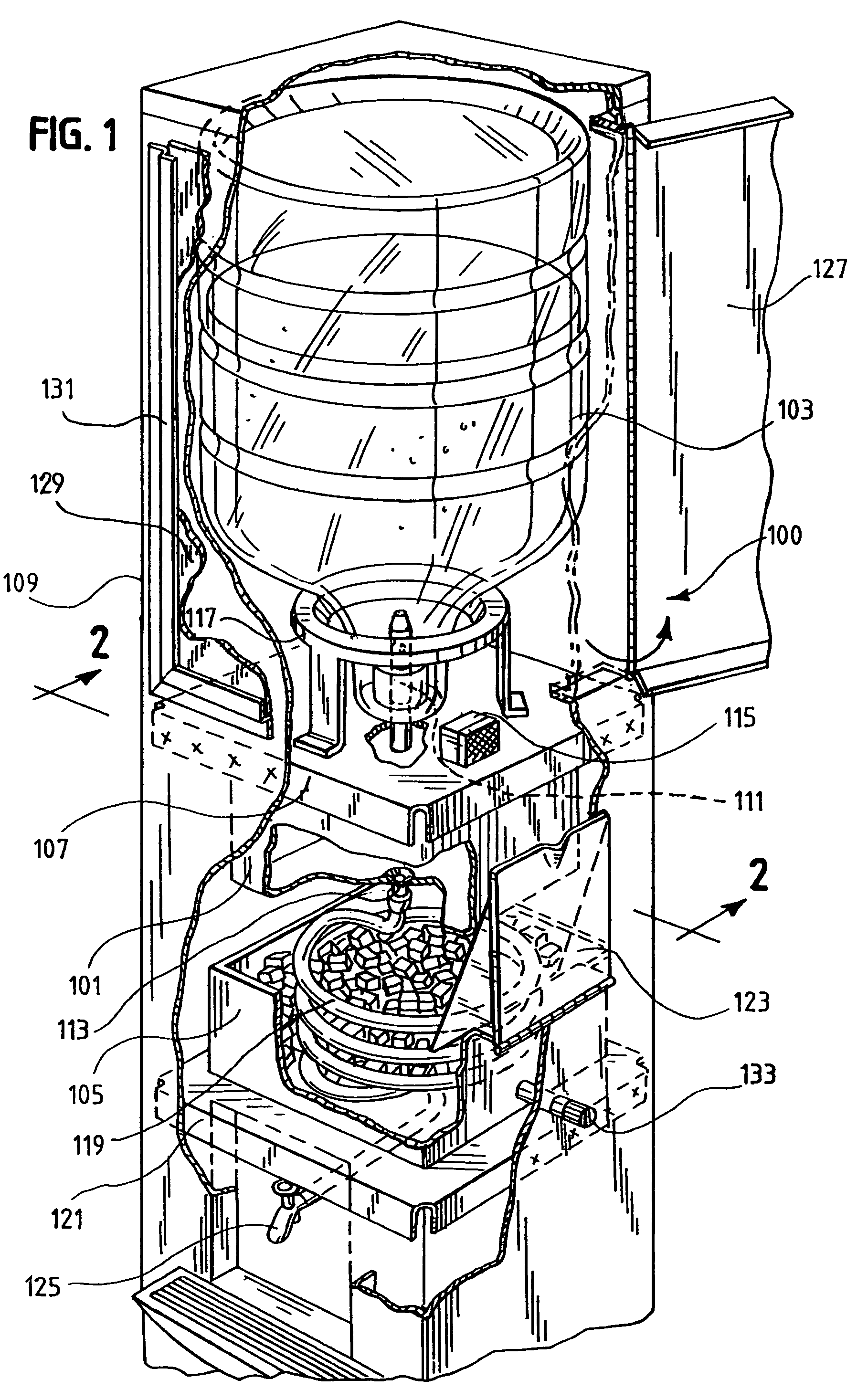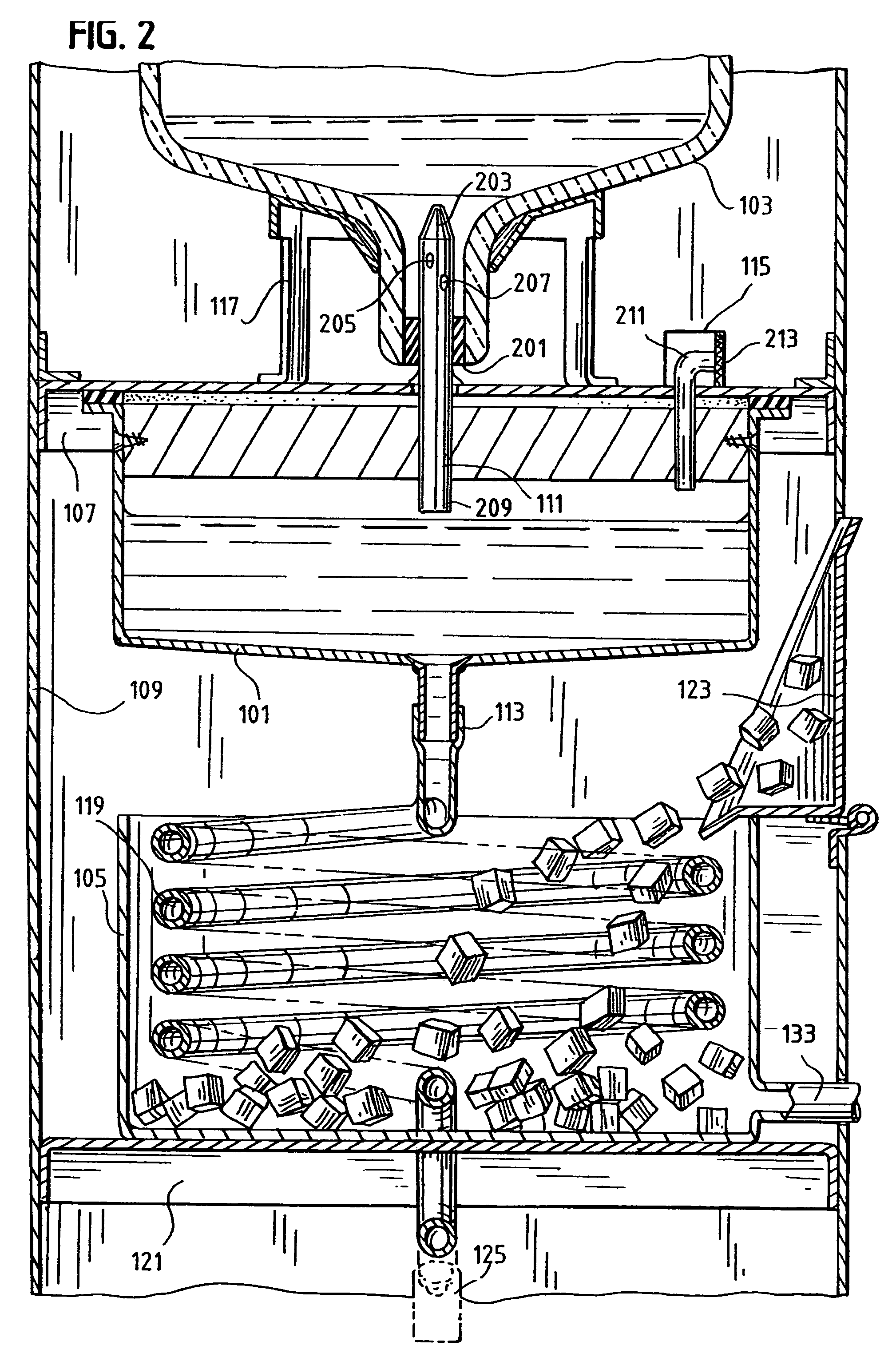Drinking water cooler
a technology for drinking water coolers and coolers, applied in the field of drinking water coolers, can solve the problems of contamination of the outside of the water bottle, inability to readily find the power source for driving the refrigeration system, and inability to easily clean up the water bottle,
- Summary
- Abstract
- Description
- Claims
- Application Information
AI Technical Summary
Benefits of technology
Problems solved by technology
Method used
Image
Examples
Embodiment Construction
[0010]The following describes an apparatus for and method of delivering cooled and uncontaminated drinking water from a water cooler. The cooler includes a reservoir that receives drinking water from a water bottle, and a conduit that is contained in a container that holds a cooling medium such as ice. The conduit permits the indirect cooling of the drinking water from the reservoir so as to prevent contamination of the drinking water.
[0011]A water cooler 100 that minimizes the potential for drinking water contamination through the indirect cooling of water supplied from a water bottle is as shown in FIG. 1. The water cooler 100 includes a reservoir 101 that receives drinking water from a water bottle 103 and a cooling container 105 that holds ice used to cool the drinking water. The water bottle 103 is a commercially available water bottle that has a hygienic seal at the bottle outlet as commonly known in the industry. Generally, water bottles are made of rigid material, such as se...
PUM
 Login to View More
Login to View More Abstract
Description
Claims
Application Information
 Login to View More
Login to View More - R&D
- Intellectual Property
- Life Sciences
- Materials
- Tech Scout
- Unparalleled Data Quality
- Higher Quality Content
- 60% Fewer Hallucinations
Browse by: Latest US Patents, China's latest patents, Technical Efficacy Thesaurus, Application Domain, Technology Topic, Popular Technical Reports.
© 2025 PatSnap. All rights reserved.Legal|Privacy policy|Modern Slavery Act Transparency Statement|Sitemap|About US| Contact US: help@patsnap.com



